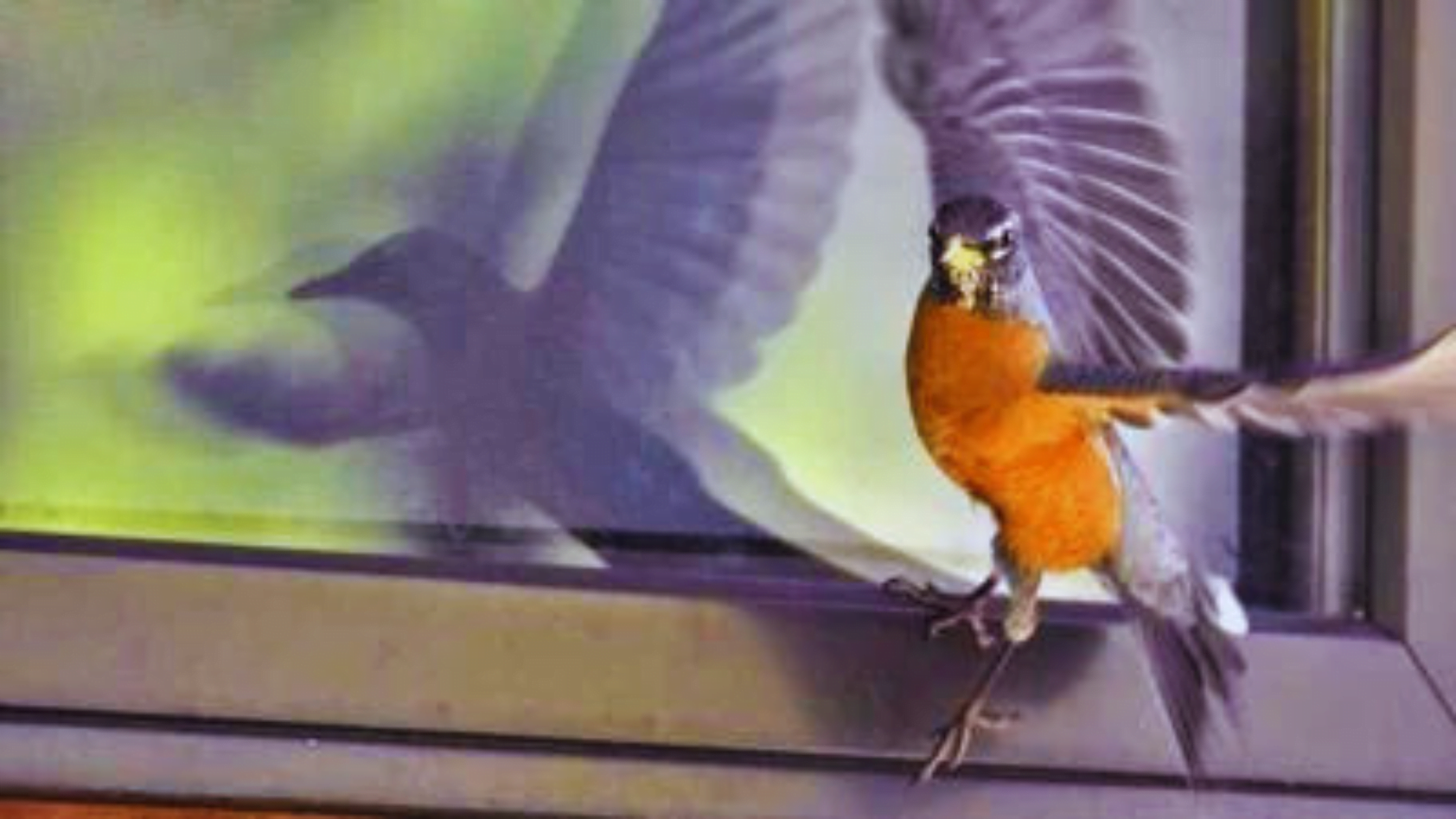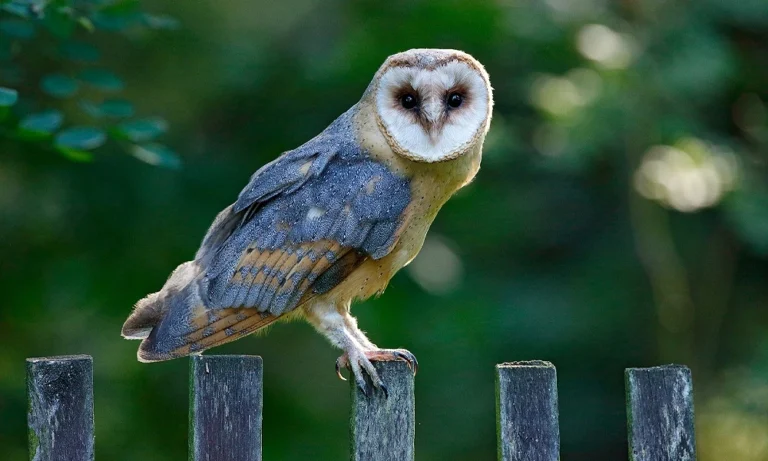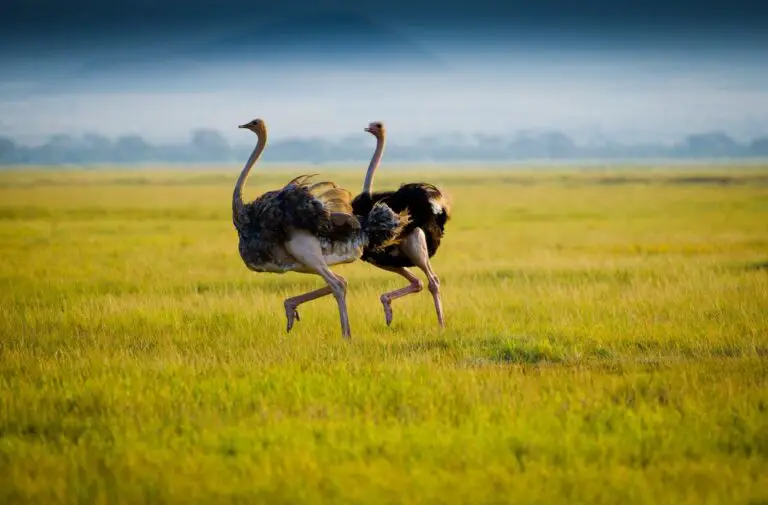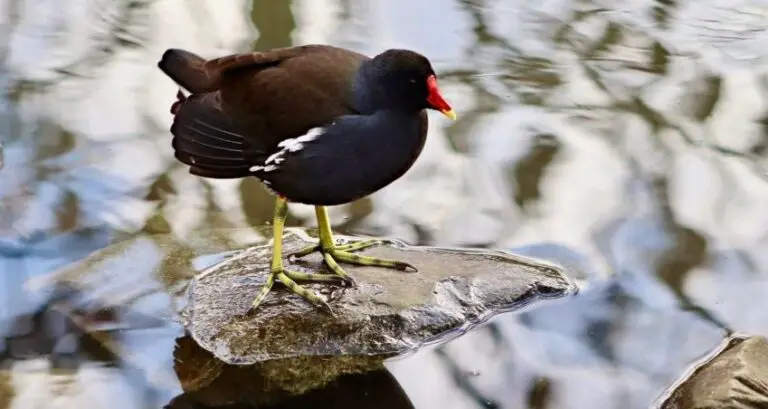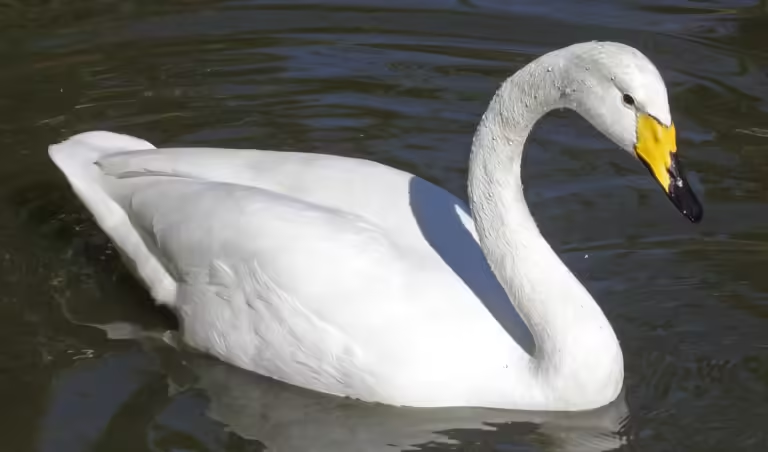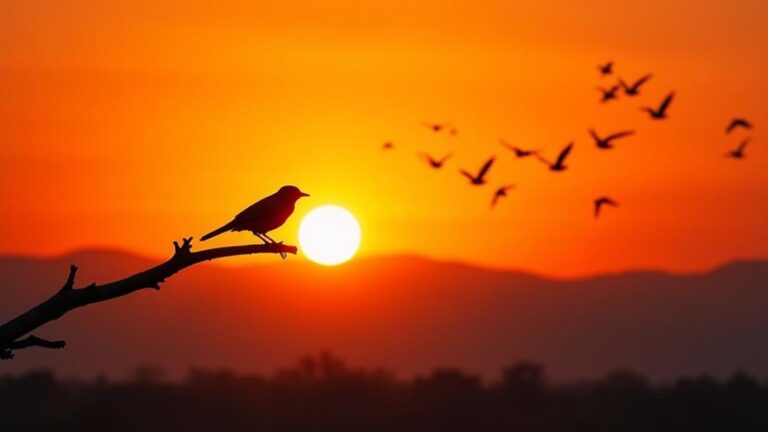“What does it mean when a bird hits your window?” is a question that often arises, and while there are various interpretations, it’s commonly believed to be a sign of impending change or bad luck.
Have you ever witnessed a bird crashing into a window, leaving you wondering what it could possibly mean? The occurrence of bird-window collisions is not uncommon, and it has piqued the curiosity of many over the years. While some may assign symbolism or superstition to this phenomenon, the reality is that bird strikes have a significant impact on bird populations.
Bird-window collisions, also known as bird-strike incidents, are a major cause of bird mortality. According to studies, up to 1 billion birds die each year due to window strikes. Understanding the causes behind these collisions and taking proactive measures can go a long way in reducing these incidents and preserving bird populations. In this article, we will delve deeper into the reasons behind bird-window collisions, explore their symbolic interpretations, highlight the impact on bird conservation, and provide tips for preventing them.
Reasons Behind Bird-Window Collisions
There are several reasons why birds may collide with windows, leading to bird-strike incidents and mortality rates:
| Reasons for Bird-Window Collisions | Description |
|---|---|
| Confused territorial behavior | Birds may mistake their reflection in a window for a rival bird and engage in aggressive behavior, leading to a collision. |
| Mistaking reflections for open space | Birds may perceive reflections of vegetation or sky in windows as open spaces or flyways, leading to collisions. |
| Drawn towards reflective surfaces | Birds may become attracted to reflective surfaces on buildings, such as glass facades or windows, leading to collisions. |
Window design and the presence of reflective surfaces can also contribute to bird-strike incidents. Many birds are unable to perceive the transparency of glass and may not recognize the presence of an obstacle, leading to collisions.
Reflective Window Surfaces and Bird Strikes
Reflective surfaces, such as glass facades or windows, are particularly dangerous for birds in urban environments. Birds often become disoriented by the reflections of trees, sky and other features in these surfaces. They perceive the reflection as open space and fly towards it, resulting in a collision. Some windows, such as energy-efficient low-e glass, are treated with a reflective coating that poses an even greater threat to birds.
Window Design and Bird Safety
Window design can play a crucial role in reducing bird strikes. Bird-safe buildings incorporate features that make windows more visible to birds and reduce the risk of collisions. For example, windows can be angled or fritted to make them more visible to birds, or have a visual marker indicating the presence of a barrier. Additionally, windows can be designed to be less reflective or to use tinted glass to reduce the amount of glare that is visible to birds.
Symbolic Meanings of Bird-Window Collisions
Bird-window collisions have long been associated with various symbolic meanings and superstitions in different cultures. While the interpretations may vary, there is a common belief that birds hold spiritual significance and carry messages from the afterlife.
“When a bird hit my window, I had a sinking feeling in my heart. My grandmother, who had recently passed away, used to say that birds were messengers from beyond. I took it as a sign that she was checking up on me.”
In some cultures, a bird hitting a window is seen as a bad omen, signifying an impending death or misfortune. Other interpretations suggest that the collision is a message from the universe or a divine force, urging the person to pay attention to a specific aspect of their life.
| Bird | Meaning |
|---|---|
| Sparrow | Good luck, new beginnings, or a message from a loved one who has passed away. |
| Robin | New beginnings and change in your life, especially in your personal relationships. |
| Blue jay | Protection, communication, and fearlessness, or a message from a deceased loved one. |
| Cardinal | A message from a deceased loved one, or a sign of good luck and blessings. |
| Blackbird | A warning of impending death or bad luck, or a message from the spirit world. |
| Dove | A symbol of peace, love, and unity, or a message from a deceased loved one. |
| Hawk | A message from the spirit world, or a warning of danger or impending change. |
| Woodpecker | A sign of opportunity and abundance, or a message from a deceased loved one. |
While these interpretations may hold personal significance for some, it is important to recognize the scientific explanation behind bird-window collisions. By understanding the reasons behind this phenomenon, we can take steps to prevent it and protect bird populations.
Impact on Bird Conservation
It is estimated that up to a billion birds die each year in the United States alone due to window collisions. This staggering figure highlights the urgent need for bird-safe building practices and initiatives to reduce bird mortality rates.
Bird collisions with windows can have a significant impact on bird populations, especially for migratory species that are already facing threats from habitat loss and climate change. In addition to individual bird deaths, these collisions can also contribute to declines in local populations and even extinction of species over time.
Impact on Bird Conservation
Bird-safe building practices are crucial for mitigating bird-window collisions. Some effective strategies include:
| Strategy | Description |
|---|---|
| Bird-friendly window treatments | These treatments, such as UV-reflective glass or patterned films, help birds recognize the presence of a window and avoid colliding with them. |
| Window decals and patterns | These features can be added to windows to break up the reflection and reduce confusion for birds. |
| Window-mounted bird deterrents | These devices, such as bird feeders or fake birds of prey, can be placed outside windows to discourage birds from flying into them. |
By implementing these strategies, we can reduce the number of bird-window collisions and help protect bird populations for generations to come.
Understanding Bird Behavior and Territorial Disputes
Bird-window collisions can often be attributed to confused territorial behavior, particularly during breeding season. Male birds may fiercely defend their territory and perceive their own reflection in a window as a rival. This can lead to aggressive behavior, including collisions with the window in an attempt to drive away the perceived intruder.
Additionally, some bird species are more prone to colliding with windows due to their feeding or hunting habits. Birds that feed on insects or other small prey may be drawn towards windows with insect swarms hovering around them. Predatory birds may mistake the reflection of nearby trees or foliage for a potential prey.
Seasonal Patterns of Bird-Window Collisions
While bird-window collisions can occur year-round, there are certain seasonal patterns that coincide with breeding and migration periods. In North America, for example, the most common time for bird strikes is during spring and fall migration seasons when birds are on the move and may be disoriented by unfamiliar surroundings or unfamiliar lighting conditions.
During the breeding season, territorial disputes become more common and can lead to increased collisions with windows. Certain species, such as the American Goldfinch, are known to be particularly prone to window strikes during their breeding season.
Preventing Bird Collisions with Windows
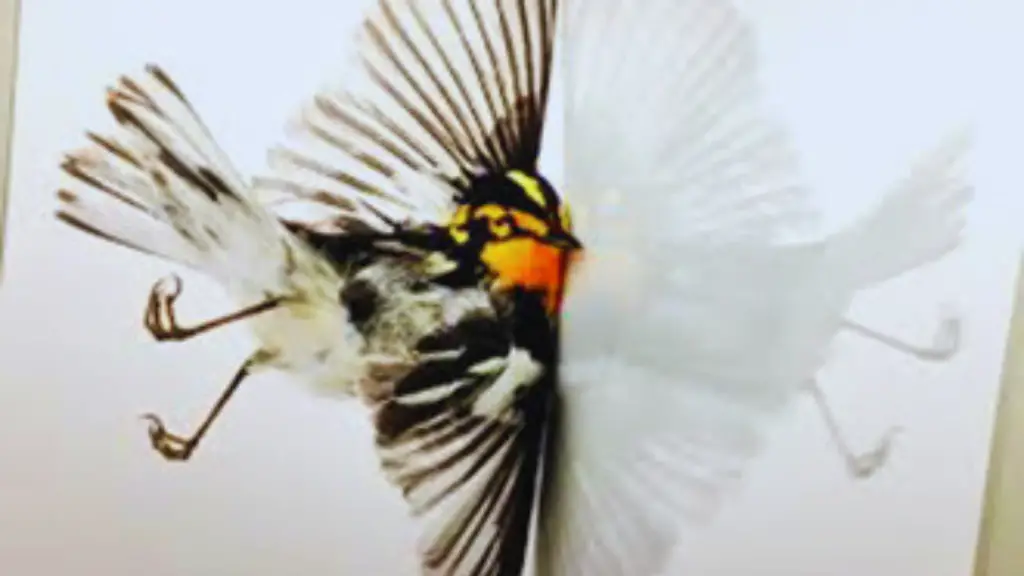
Reducing the number of bird-window collisions requires adopting bird-safe practices and implementing preventative measures.
Bird-Friendly Window Treatments
One effective method for preventing bird strikes is installing bird-friendly window treatments. These treatments include UV-reflective glass, window films, and decals, which make windows more visible to birds. Additionally, applying patterns or stickers to windows can prevent birds from mistaking reflections for open space.
Window-Mounted Bird Deterrents
Another effective method for preventing bird-window collisions is using window-mounted bird deterrents. These devices include window screens, netting, and acoustic deterrents, which emit high-pitched sounds to deter birds. For larger birds, exterior shading devices or exterior shades can reduce collisions.
Keeping Windows Clean
Keeping windows clean and free of debris is also important for preventing bird-window collisions. Dirty windows can reflect the sky or nearby surroundings, making them appear open and inviting to birds. By keeping windows clean, birds will be less likely to collide with them.
Implementing these preventative measures can greatly reduce the number of bird-window collisions, ultimately protecting bird populations and promoting bird conservation efforts.
Research and Reporting on Bird-Window Collisions
Efforts to mitigate bird-window collisions are often based on data and research findings that highlight the extent and severity of the issue. Numerous organizations and programs are dedicated to studying bird-window collisions, collecting data, and developing solutions to minimize the impact of window strikes on bird populations.
One such organization is the American Bird Conservancy, which leads the Collisions Program aimed at addressing bird-window collisions. Their research has shown that up to 1 billion birds are killed each year in North America alone due to collisions with buildings, including residential homes and commercial structures.
| Programs and Initiatives | Description |
|---|---|
| BirdSafe Building Program | A program that promotes bird-friendly building design and practices to reduce the risk of collisions. |
| FLAP (Fatal Light Awareness Program) | A program that raises awareness about the impact of artificial lighting on bird behavior and advocates for bird-friendly lighting solutions. |
| Citizen Science Initiatives | Collaborative efforts between researchers and the public to gather data on bird-window strikes and monitor collision hotspots. |
Other bird conservation organizations, such as the Cornell Lab of Ornithology and the National Audubon Society, have also launched programs and initiatives aimed at addressing bird-window collisions. These programs often rely on citizen science data, encouraging members of the public to report incidents of bird-window collisions, which can then be used to identify patterns and trends in bird behavior and window design.
Public Awareness and Education
Public awareness and education are crucial components in mitigating bird-window collisions. Despite the prevalence of this issue, it remains largely unknown to the general public. By increasing awareness and understanding, more people can take action to prevent bird strikes and promote bird conservation.
Various organizations and campaigns have emerged to address this issue. One such initiative is the Lights Out program, which encourages building owners to turn off non-essential lights during migratory bird season to reduce the amount of artificial lighting at night. This helps to prevent birds from becoming disoriented and colliding with buildings.
Bird awareness campaigns are also being launched to educate the public about the significance of bird-window collisions. These initiatives aim to raise awareness of the harm caused by bird strikes and promote bird-friendly practices, such as using bird-safe window treatments, decals, or netting. By making small changes, individuals can contribute to reducing bird mortality rates and promoting a healthier environment for both humans and wildlife.
Light Pollution and Urban Landscapes

Light pollution is a serious concern for birds, particularly in urban areas where artificial lighting can disorient them and cause collisions with buildings. Birds rely on natural light cycles to navigate during migration and feeding, and the presence of urban lighting can interfere with these processes. It is estimated that more than a billion birds die each year in North America alone due to collisions with buildings.
Artificial lighting can also attract insects, which in turn can attract birds. This can lead to increased bird activity in urban areas, further increasing the risk of collisions. In addition, birds may be attracted to the lights of tall buildings during migration, mistaking them for the stars they use to navigate.
To mitigate the impact of light pollution on birds, it is important to use appropriate lighting practices. This includes reducing the intensity of lights, directing lights downwards instead of upwards, and turning off unnecessary lights during migration periods. Bird-friendly lighting options, such as red or amber lights, can also be used to reduce the impact on birds.
Urban landscapes can also contribute to bird-window collisions, particularly if buildings are located near habitats that attract birds, such as parks or gardens. The presence of reflective surfaces on buildings, such as glass facades, can further increase the risk of collisions. To minimize the impact on birds, it is important to consider the location and design of buildings, as well as the materials used.
Examples of bird-friendly building practices include:
| Practice | Description |
|---|---|
| Install bird-friendly glass | Glass with a UV pattern that is visible to birds or fritted glass that reduces reflectivity can help prevent collisions. |
| Place decals on windows | Decals can help birds see windows and avoid collisions. They should be placed no more than two inches apart on the outside surface of windows. |
| Reduce vegetation near windows | Trees and bushes near windows can attract birds, increasing the risk of collisions. It is important to maintain a clear zone around windows to reduce this risk. |
By taking steps to reduce light pollution and implement bird-friendly building practices, we can help minimize the impact of urban landscapes on bird-window collisions.
Bird Rehabilitation and Conservation Efforts
Bird-window collisions can cause serious injury or death to birds, but there are rehabilitation centers and conservation organizations that provide assistance and support. These groups work tirelessly to rescue and rehabilitate injured birds, as well as advocate for bird conservation and research.
| Organization | Mission |
|---|---|
| The Bird Conservancy of the Rockies | The Bird Conservancy of the Rockies focuses on monitoring bird populations, protecting habitats, and educating the public on bird conservation. They also work to mitigate bird-window collisions through research and the development of bird-friendly building designs. |
| The National Audubon Society | The National Audubon Society is dedicated to bird conservation and the protection of natural habitats. They provide support to bird rehabilitation centers, conduct research on bird populations, and advocate for bird-friendly policies and initiatives. |
| Wildlife Rehabilitation Center of Minnesota | The Wildlife Rehabilitation Center of Minnesota provides medical care and rehabilitation services to injured birds and other wildlife. They also offer educational programs and resources to promote wildlife conservation and habitat protection. |
These and many other organizations are actively working to address the issue of bird-window collisions and protect bird populations. By supporting their efforts and advocating for bird-friendly practices, we can all play a role in promoting bird conservation and ensuring their survival for generations to come.
What Does it Mean When a Bird Hits Your Window: FAQs
Q: Which bird species are most commonly affected by window strikes?
A: Many bird species are vulnerable to window collisions, but some of the most commonly affected include songbirds, woodpeckers, and raptors.
Q: Why do birds keep hitting my windows, even after the first collision?
A: Birds may continue to hit windows if they perceive reflections as potential mates, or if they mistake transparent or reflective surfaces for open space. You may need to take additional measures to prevent bird collisions, such as placing decals or installing bird-friendly window treatments.
Q: What is the best way to report incidents of bird-window collisions?
A: Many organizations and programs exist to collect data on bird-window collisions. You may report incidents online or through hotlines provided by these organizations, who use the information to study the issue, identify patterns, and develop effective solutions.
Q: How can I prevent bird-window collisions?
A: There are many methods for preventing bird-window collisions, including installing bird-friendly window treatments, placing decals or dots on windows to make them more visible to birds, and using window-mounted bird deterrents. You can also reduce the amount of lighting at night to prevent disorientation and confusion among nocturnal species.
Q: Should I try to rescue an injured bird that has collided with my window?
A: If you find an injured bird, the best course of action is to contact a local bird rehabilitation center or wildlife rescue organization. They have the training and expertise necessary to handle injured birds and ensure their safe return to the wild.
Q: What can I do to promote bird conservation and raise awareness about bird-window collisions?
A: You can participate in bird awareness campaigns, support bird conservation organizations, and educate others about the importance of bird-friendly practices. This includes using bird-friendly window treatments, reducing lighting at night, and reporting incidents of bird-window collisions to relevant organizations.

